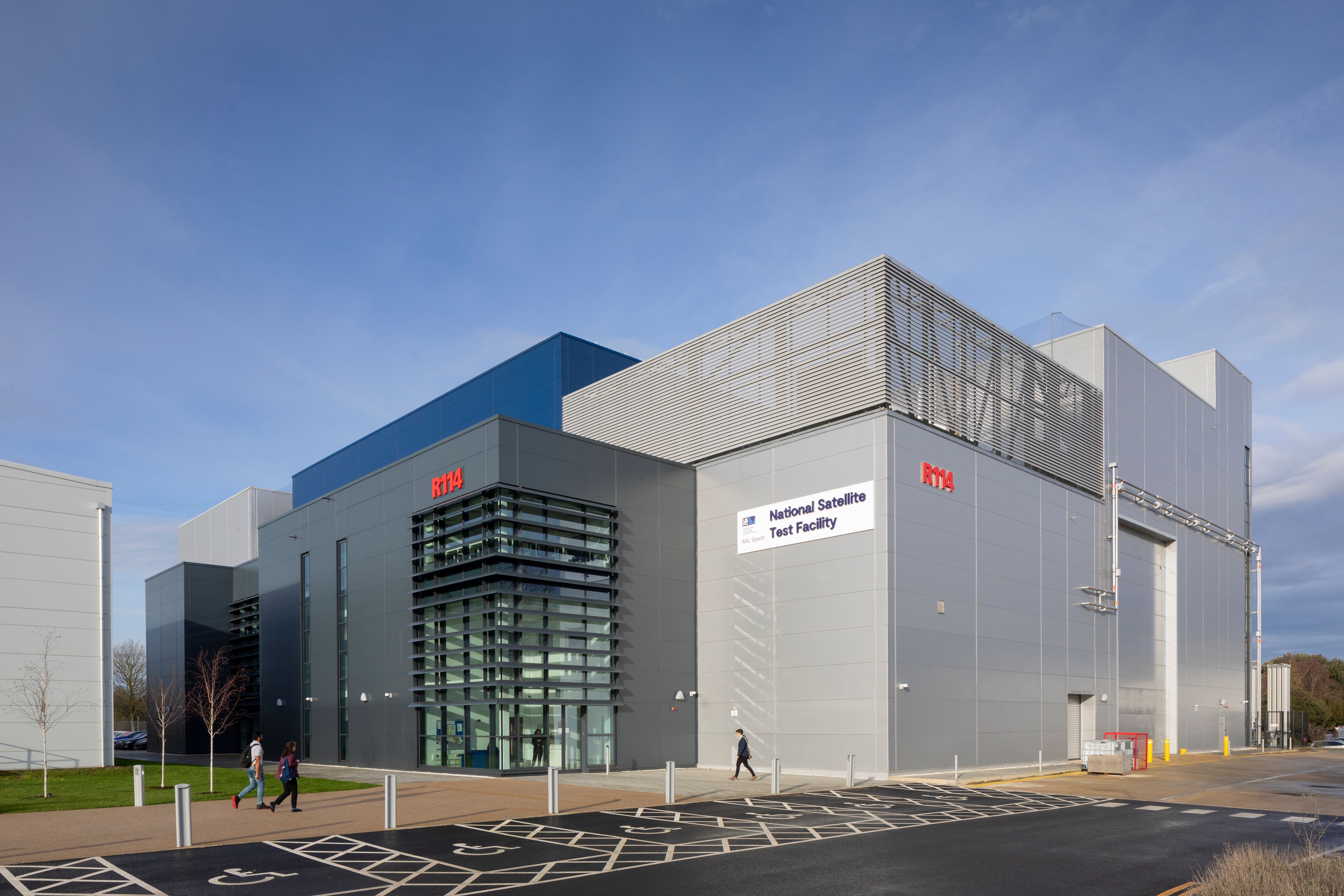New £100 million national satellite test facility opens in Oxfordshire
The facility will ensure minibus-sized satellites weighing up to seven tonnes can survive launches and the harsh conditions of space.

Your support helps us to tell the story
From reproductive rights to climate change to Big Tech, The Independent is on the ground when the story is developing. Whether it's investigating the financials of Elon Musk's pro-Trump PAC or producing our latest documentary, 'The A Word', which shines a light on the American women fighting for reproductive rights, we know how important it is to parse out the facts from the messaging.
At such a critical moment in US history, we need reporters on the ground. Your donation allows us to keep sending journalists to speak to both sides of the story.
The Independent is trusted by Americans across the entire political spectrum. And unlike many other quality news outlets, we choose not to lock Americans out of our reporting and analysis with paywalls. We believe quality journalism should be available to everyone, paid for by those who can afford it.
Your support makes all the difference.A new flagship national satellite test facility (NSTF) that will play an important role in upcoming astronomy missions has opened in Oxfordshire.
The facility, based at the Harwell Campus in Didcot, will ensure minibus-sized satellites weighing up to seven tonnes can survive launches and the harsh conditions of space.
Tests will include violently shaking the satellites, exposing them to levels of sound created during a rocket launch and subjecting them to extreme hot or cold temperatures in a vacuum chamber.
It will be used by the UK Space Agency for testing of the European Space Agency’s Ariel payload, expected to launch in 2029, which will study the chemistry of around 1,000 planets outside our solar system.
The NSTF will also support science and security missions closer to home, with Airbus Defence and Space UK set to be the first customer to conduct tests at the site later this year.
The £116 million investment is intended to strengthen the UK’s position as a world-leading satellite manufacturer and help deliver the National Space Strategy published in 2021.
Officially opened at a ceremony on Tuesday, the NSTF is operated by the Science and Technology Facilities Council (STFC) who are part of part of public funder UK Research and Innovation.
A space test chamber seven metres in diameter, the largest in the country, will be used to simulate the vacuum and temperature conditions of space and can reach temperatures as low as or as minus 180C or as high as 130C.
The facility also features an impressive electromagnetic compatibility and antenna test chamber where satellites’ communications systems can be tested securely.
Andrew Griffith, the Science, Research and Innovation minister, said: “The opening of the new National Satellite Test Facility is a significant milestone for the UK’s growing space sector that will offer the tools necessary to innovate for years to come in a competitive global market.
“By simulating the tough conditions of launch and orbit through rigorous testing, it will increase the resilience of our satellite technology to drive forward advances in navigation, weather forecasting and more – positioning our sector at the forefront of pioneering new space technologies.”
Professor Mark Thomson, executive chair of STFC, said: “UK satellite manufacturers will now have a state-of-the-art one-stop test facility on their doorstep with the capability to test very large satellites.
“The NSTF will also enable the UK to support major international efforts in fields including space exploration and Earth observation.
“Cutting-edge facilities around the globe, such as the NSTF, are what enable the international space community to accelerate the development of next generation of space technologies and large-scale scientific missions.”